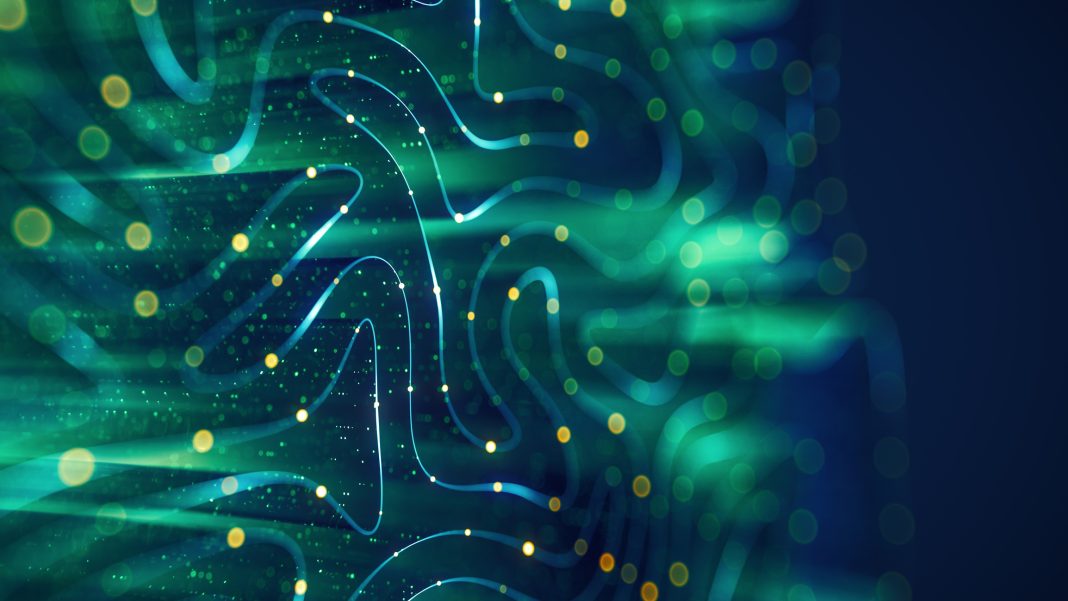Neural Speech Inc. aims to provide a link to the outside world for people who are unable to communicate. CEO and Chief Scientist, Philip Kennedy, explains the potential opportunities associated with brain interfacing
Brain electrodes that are implanted into or on the surface of the brain face an uncertain long-term future. This is because, firstly, no one wants their brain implanted if they could avoid it, and secondly, because external devices that record brain activity have improved immensely with the advent of AI and Machine Learning that brain electrodes may not be needed. These external devices can pick up EEG signals and drive devices to provide access to spelling words and phrases, or to access the Internet, write emails, and so on. Even Apple Inc. has entered the field by providing a Human Interface Device that can be controlled with external or internal signals. A recent Time magazine award to an external device company called Cognixion Inc. is highlighting the advances being made by external devices. Cognixion utilizes EEG from the visual cortex to detect eye movements, leveraging AI to enhance the signal. It has so far produced a word ‘speaking’ rate of 30 words per minute. However, this is not speaking at a conversational rate, which should be 80 to 150 words per minute. It does the ‘speaking’ by having the user focus on a screen with letters, words, or phrases and activate the phrase, for example. But this is not true conversational speech.

Computer Interfacing techniques
Internal electrodes, on the other hand, can record from 1) the brain surface using electrocorticographic electrodes (ECoG), or 2) from inside the brain surface and detect the brain signals using a) the frequency domain or b) single units, that is, from individual neurons, or c) from axons. Neurons are the workhorses of the brain, and axons are thin fibers that connect neurons. Let’s look at each of these Brain Interfacing techniques:
- ECoG: These electrodes reside within sheets of a brain-compatible material. They dot the brain’s surface with metal electrodes. These can record single units, but more frequently they record in the frequency domain. With rapid firing of neurons, the frequency increases, so frequency is a substitute for neuronal firing. This has proved very useful during surgery for locating a seizure focus, for example. The downside is that scarring (gliosis) usually occurs between the electrode and the brain’s surface, limiting their useful life to several years. But they are very productive within that time limit.
- Electrodes that penetrate the brain’s surface, such as the Utah array or Thread electrodes, can record from many single units, even as many as thousands. These have provided researchers with tools to decode neural activity in many situations, such as controlling paralyzed limbs, robotic arms, and even speech. The control of paralyzed limbs requires feedback of sensation from the limbs, and this is achieved by stimulating the sensory part of the brain. So, for the control of upper limb movement, the motor part of the brain’s cortex is recorded with the person voluntarily controlling the neuronal firing; sensation is mimicked by stimulation of the sensory arm cortex. This provides more accurate control. These signals can also be used to access computers, send emails, access the Internet, control the environment, and so on. The downside of these electrodes is, again, scarring. The signals can persist for many years, but publications indicate a loss of 90% signals by year three. Nevertheless, these electrodes have advanced our knowledge of brain function, especially with regard to prosthetics. It would appear unethical to implant an individual with an expected lifetime of many decades if the electrode is going to fail within a few years.
- The third type of electrode is biological in the sense that it grows the brain into the electrode tip. The Neurotrophic Electrode is an example. Axons grow in from surrounding neurons under the influence of growth factors. The recording surfaces do not protrude into the axons but instead lie alongside the ingrown brain. There is no scarring even after 13 years in one person, and four years in two others, when they died. Furthermore, the axonal spikes are stable as long as the person lives. For example, in one person at year 10, one specific axonal spike responded to the sound of a guitar note. The exact same axonal spike responded to the same guitar note four years earlier. Furthermore, the identification parameters of the axonal spikes remained unchanged over the entire decade. This, along with other evidence, indicates that the axonal spikes are stable. So, with stable and long-lasting axonal spikes, this electrode would appear to be optimized for prosthetic usage in paralyzed and mute persons who require lifetime restoration of speech or movement.
Could this electrode be used by someone who wants to connect to the cloud and access Artificial Intelligence? It is highly likely that with its stability and longevity, this Neurotrophic Electrode is a candidate for such usage. For instance, by implanting electrodes in the person’s speech motor cortex, decoding silent or audible speech, and transmitting it to the cloud, it should be possible to access AI systems like ChatGPT. This would enhance our cognitive functions by expanding our memory and knowledge, and allow mathematical calculations. The information from the cloud would be transmitted back to the person’s hearing.
Future outlook
Such futuristic usage has ethical issues – for example, mind control. However, the answer to that is not to have the information transmitted back to the person by stimulating their brain, but rather to the person’s hearing. Stimulation of the brain should be avoided entirely in this situation. The hearing device would have an ‘ off’ switch. Thus, mind control would not be possible.
Brain interfacing is the future. Whether it is for prosthetic usage or for enhancing cognition, the data strongly suggest that stable signals are long-lasting when using a biological connection to the brain. A new era of brain interfacing is upon us.


